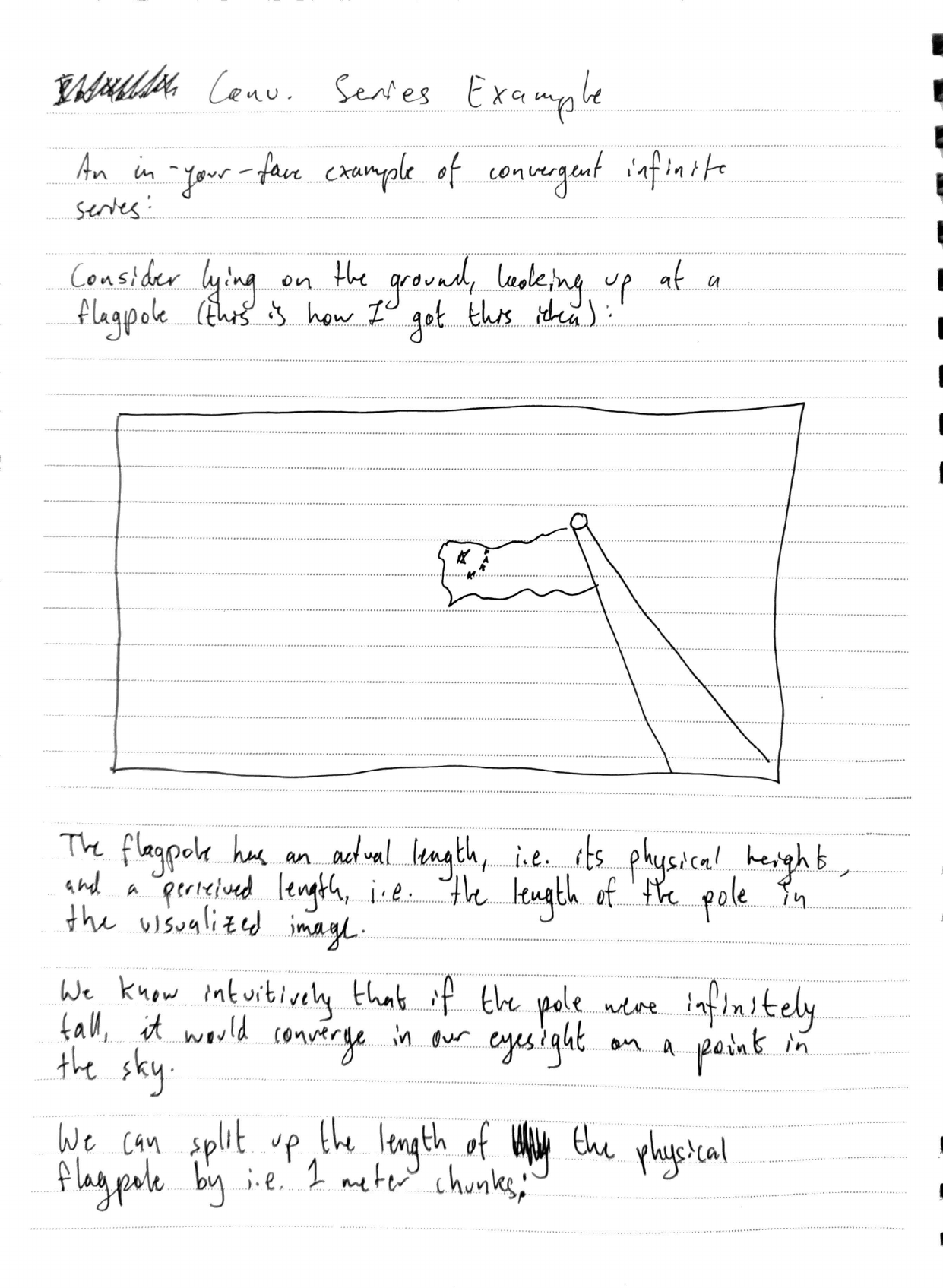An in-your-face example of convergent infinite series:
Consider lying on the ground, looking up at a flagpole (this is how I got this idea):
Drawing
The flagpole has an actual length, i.e. its physical height, and a perceived length, i.e. the length of the pole in the visualized image.
We know intuitively that if the pole were infinitely tall, it would converge in our eyesight on a point in the sky.
We can split up the length of the physical flagpole by i.e. sic 1 meter chunks:
Drawing
and the total length will be the sum of these chunks.
In the perceived image, these chunks will correspond to parts of decreasing perceived length:
Drawing
(Measurements are approximate and the unit is unspecified.)
and the total perceived length will be the sum of these perceived bits.
So we have found the perceived length by splitting the physical object into some number of equally-sized partitions and adding the perceived length of each partition.
If we make the flagpole infinitely long, we may still carry out the same operation (hopefully).
We split the pole into an infinite number of 1m segments; if we sum the perceived length of each segment, we should get the perceived length of the flagpole. (all P(x) the perceived length of x:
P(flagpole) = P(seg 1) + P(seg 2) + P(seg 3) + ... )
But as discussed earlier, an infinitely long flagpole intuitively converges to a point in the sky, so its perceived length is non-infinite. It is also certainly nonzero, so:
0 < P(flagpole) < ∞
which gives
0 < ∑i P(seg i) < ∞
so that series must converge!


